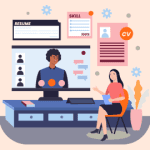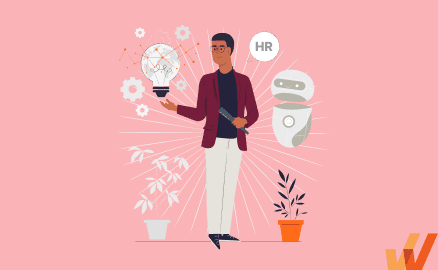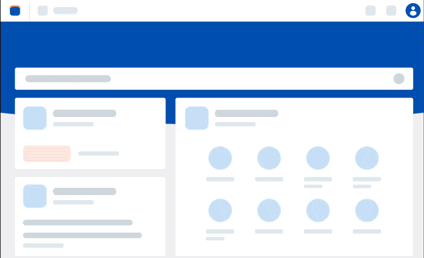

Adelina Karpenkova


Did you know that only 22% of employees are engaged at work?
With so many people all over the world not being engaged in the workplace, HR managers keep looking for new ways to get their team members active. This is where HR teams can turn to digital innovation for new ideas and processes.
HR transformation drives innovation and helps companies rethink the ways they’ve been managing their workforce and adopt new, more creative methods. In this article, we’ve covered ten examples of HR innovation that you can follow to reshape your HR strategy and increase employee engagement.
HR innovation is an act of developing and implementing modern technologies and approaches to human resources management.
HR innovation can take many forms and involve different methods, such as using automation software to streamline HR processes, adopting AI-powered technology, and developing and living up to new policies that support employee engagement and well-being.
Let’s look at more specific examples of HR innovation in the next section.
These are ten examples of how HR innovation may look.
Implementing AI helps HR teams and organizations to gain plenty of insights without ballooning headcount or cost.
The most common use case for AI in human resources is using software to identify ideal candidates for specific positions. AI-driven software has powered recruitment digital transformation with new automation such as screening resumes, cover letters, and other application materials and then selecting the most qualified candidates based on job requirements. It can also weed out candidates that don’t meet the minimum qualifications for a job.
Here are a few examples of tools that enable AI-powered recruiting:

If you still don’t use digital tools to automate employee onboarding, you should do it first thing.
Digital onboarding refers to using digital tools to guide new hires through their first days at work. It often involves automating administrative tasks, sending emails, employee training, and other repetitive tasks.
Tools like Whatfix and ClickBoarding provide customizable onboarding workflows, digital forms, and automated reminders for new hires. Learning management systems (LMS) like TalentLMS and Docebo are also used to support digital onboarding with custom training programs.
To help new hires navigate your business tools, you can implement a digital adoption platform (DAP) in your tech stack. DAP, like Whatfix, overlays on top of any platform in your toolkit and allows you to add custom in-app guidance to the tool’s interface. You can create personalized to-do lists, add tooltips, and map out workflows tailored to specific roles to enable effective onboarding.


Digital workplaces are one more example of HR innovation. It’s essentially the transformation of the physical workplace into a more digital and connected environment.
The digitalization of the workplace involves providing employees with the technology they need to work remotely or in a distributed team environment.
There’s a variety of tools that help to create a digital workplace: from communication platforms and video-conferencing tools to project management software and enterprise resource planning (ERP) systems. So if you use Slack or another business communication channel in your organization, you’ve already taken your first step toward HR innovation (just don’t stop there).

Employee self-support portals provide employees with direct access to HR resources, such as benefits information, payroll information, and company policies. These portals allow companies to take the burden off the HR teams while enabling employees to quickly find the information they need without having to reach out to the HR staff.
Tools like Workday and BambooHR are perhaps the most popular self-service HCM software. They serve as centralized platforms for all HR-related information that employees can access and manage, provided that they have the necessary permissions.

Largely, HR innovation aims at automating time-consuming HR processes. Data management is undoubtedly one of the biggest time eaters in human resources (and in every other niche).
Automated data management software handles the collection, processing, and analysis of HR data. Here are a few specific examples of what exactly you can automate in HR data management:

Mobile apps are the next big thing in HR technology. They allow employees to access company updates, manage their time off, or request benefits anywhere at any time.
Typically, an employee mobile app includes the following features:
You can build a custom mobile app or use an out-of-the-box solution by BambooHR or some other HR system with its own HR mobile application.

HR innovation isn’t all work and no play. It also involves creative initiatives such as gamification in training.
Introducing game-like elements in training programs helps to make learning more engaging and increase participation. Common gamification techniques in HR include:
It’s a great idea to enrich your mobile app with gamification elements to encourage employees to check in and interact with suggested training materials more often.
Good old chatbots have only started to conquer the HR niche. You know them from sales and customer support, but how exactly can chatbots be helpful in human resources?
HR chatbots may use artificial intelligence (AI) or follow pre-defined conversation flows to assist employees with their HR needs, such as answering questions about policies, benefits, and other HR-related matters. They may also help automate tasks such as screening candidates, scheduling interviews, onboarding, managing leaves, and more.
Unlike HR reps, chatbots are available 24/7 so that employees have instant access to critical information and assistance.
Some HR systems, like HireVue and Leena AI offer built-in chatbot functionality. But if your HR software doesn’t, you can easily create it through a third-party tool and integrate it into your system. For instance, you can create an HR bot in Slack so that employees can get the necessary assistance without leaving your main communication channel.

Focusing on employee well-being is one of the hottest HR trends. Sixty-eight percent of HR leaders rate employee mental health and well-being as their top priority.
One of the innovative approaches to supporting well-being at work is adopting employee wellness tools that help employees maintain their physical and mental health. Online wellness portals such as Wellspace offer accessible well-being support for organizations looking to incorporate health initiatives in the workplace. These tools usually integrate with HR systems and benefit management platforms.

Implementing employee survey tools in the workplace is another form of HR innovation aimed at supporting employee engagement and well-being.
Survey software allows organizations to run frequent pulse surveys to stay on top of staff satisfaction and identify troubling signals promptly. You can run regular employee surveys through your company’s intranet, communication channels, or a dedicated survey app.

If you decide to drive HR innovation in your organization, follow these tips to overcome resistance and get your team on board.
To successfully drive company-wide innovation (every HR innovation typically affects the entire organization), you need to create and sustain an innovative company culture.
Easier said than done.
In fact, it’s not so difficult to create a culture of innovation in your organization if you stick to a plan. Here are a few components your plan must include:
The last point is the most important one for creating an innovative company culture. When seeing you actually act on the ideas they suggest, employees will be more eager to think creatively.
HR innovation requires a buy-in from the entire organization. It won’t work out if employees don’t work together to adopt a new initiative or technology.
Collaboration brings together professionals with different skills, perspectives, and backgrounds to work together towards a common goal — adopting innovative ideas in the workplace.
Assign people responsible for driving innovation in each department and team. These people must communicate regularly to share insights into navigating the change and what works and doesn’t.
Make it easy to collaborate. If you haven’t done it yet, introduce digital collaboration tools where employees from different teams can communicate.
You need to incentivize your employees to make an effort to support innovation. Develop a recognition and reward program to motivate and engage employees in innovation.
First, establish a system for measuring employees’ contribution to driving innovation. Next, determine the types of recognition and rewards, such as employee benefits or public recognition. And lastly, regularly review and evaluate the program to ensure it achieves its intended goals.
For instance, you can announce a recognition program for adopting a self-service portal. People who interact with it often get small rewards, like digital badges, company merch, etc. You can evaluate the effect of the program by measuring your HR team’s workload before and after introducing it.
People resist change because it brings uncertainty to their lives. They need relevant training to embrace change and adopt new technology or initiatives.
Cross-departmental training provides employees with a broader perspective and understanding of HR innovation to successfully implement it in their daily operations.
You can host workshops and/or design on-demand training to introduce new HR initiatives and offer the best practices to seamlessly integrate them into employees’ work days.
HR innovation is all about technology. Don’t hesitate to add helpful tools to your tech stack to make it easier to embrace innovation for everyone involved.
Follow these simple best practices to make the most out of your HR technology:
Drive HR technology adoption with training programs. The easiest way to adopt new technology is by offering custom in-app guidance with Whatfix.
HR innovation may involve everything from using AI to automate recruitment processes, creating digital workspaces for remote employees, and implementing mobile apps that use gamification to drive employee engagement.
Regardless of what initiatives you go for, remember that the ultimate goal of HR innovation is to create a more efficient and engaging workplace for employees. So you need to make it easy for employees to navigate the change and adopt new procedures.
Start by implementing a digital adoption platform such as Whatfix to guide your teams through new HR technology, helping them to integrate it into their daily workflows.
Schedule a free demo with us to learn more about how Whatfix can support your HR transformation initiatives.
Thank you for subscribing!